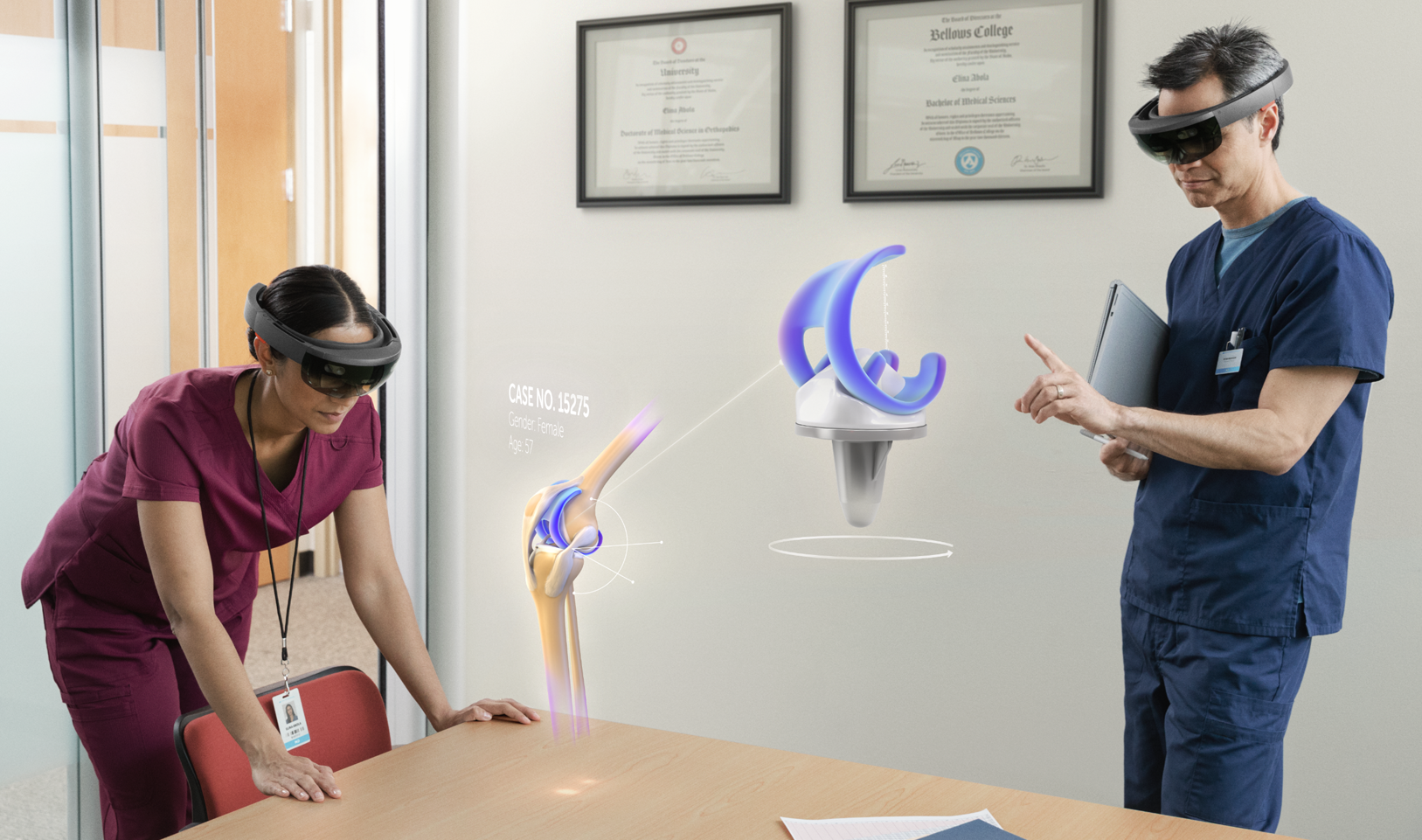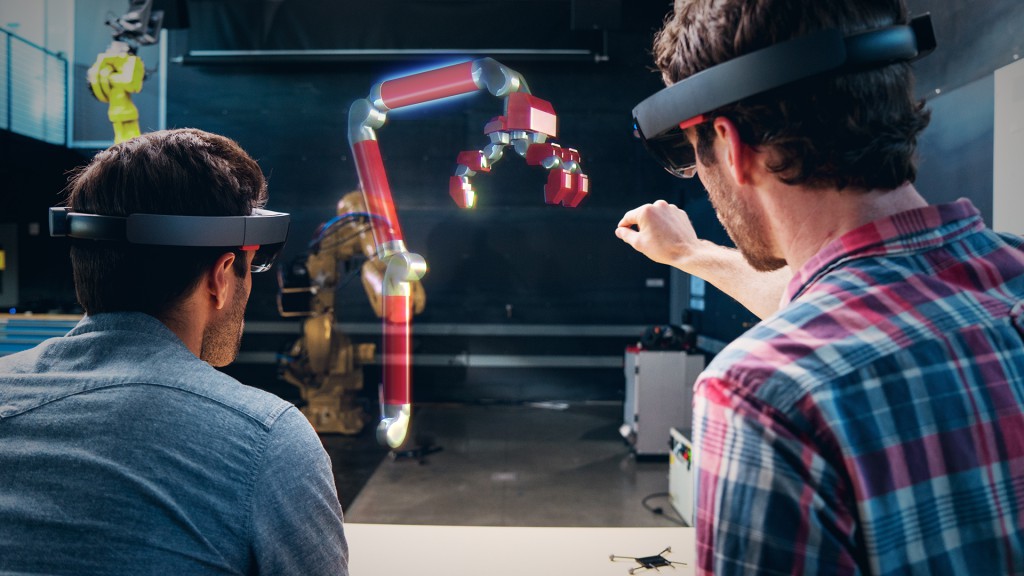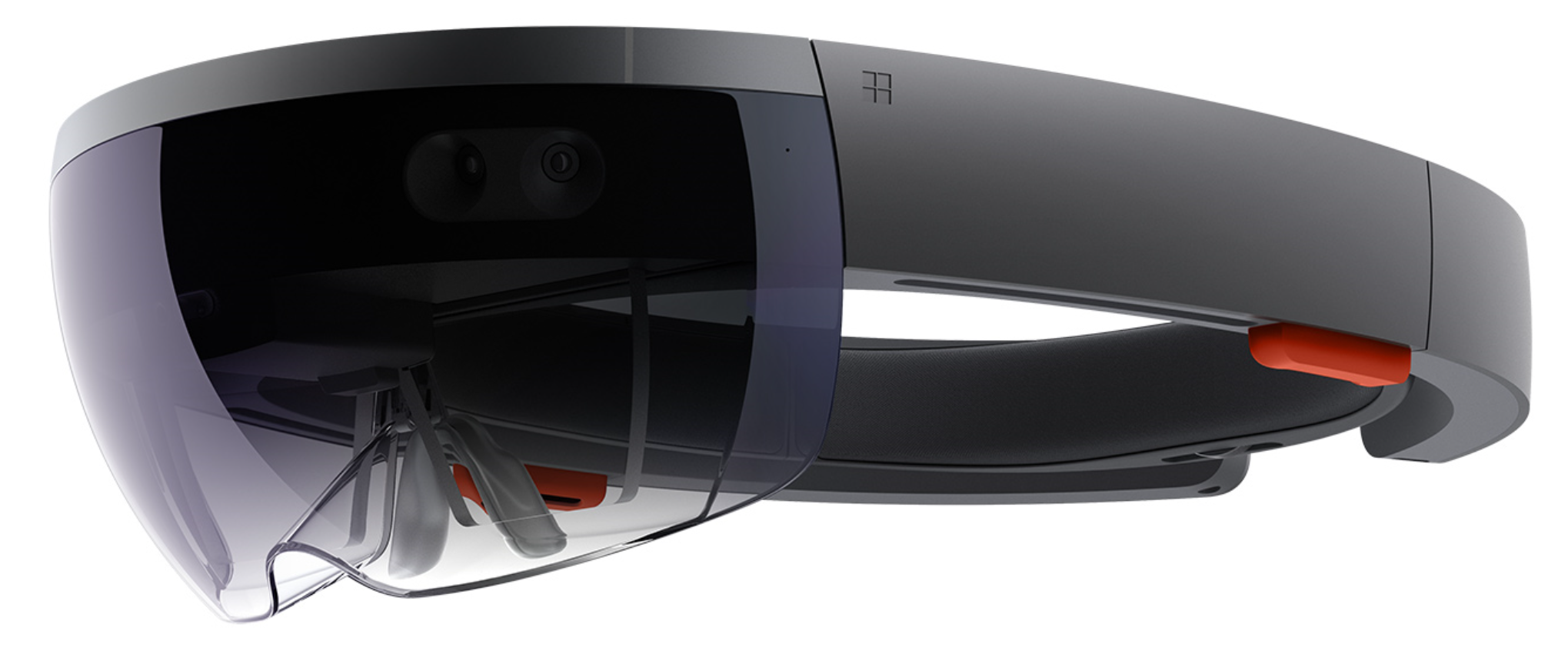
Using holograms to train nurses: Pearson and Microsoft launch mixed-reality curriculum
An app that uses holograms of patients to train nurses is part of a new curriculum being launched by education company Pearson and Microsoft.
The firms have worked together to create a mixed-reality curriculum of six apps that use Microsoft’s HoloLens and other Windows headsets to immerse students in subject areas such as health, history, chemistry and maths.
Rather than put users in a fully computer-generated world, as virtual reality does, HoloLens allows users to place 3D digital models in the room alongside them. As the Windows-10-based product does not have wires or external cameras, or require a phone or PC connection, users can walk around the objects they create and interact with them using gestures, gaze and voice.
Pearson and Microsoft made the curriculum announcement ahead of Bett, an educational conference that will be held in London this week. During the event, Microsoft will also reveal new devices for classrooms, updates to Office and Minecraft aimed at helping children learn and a partnership with NASA.
The first apps that Pearson and Microsoft will release will be HoloPatient and HoloHuman. To be launched in March, HoloPatient provides nursing schools with a series of digitally-created healthcare scenarios. Students can wear HoloLens, see holograms of professional actors pretending to be ill and learn how to diagnose and treat them.
HoloHistory will be released a month later and is aimed at primary and secondary school pupils. The app “simulates a holographic museum, where the students and teacher can place artefacts to create their own museum environment”, Microsoft said.
HoloChemistry will follow in May and is aimed at the same age group as well as higher education classrooms. The “3D molecule builder and visualisation tool” allows students and teachers to collaborate on the same holograms to create, save, upload and download molecules. In trials, Pearson has seen up to 400 students working together to build molecules.
In September, Pearson and Microsoft will release HoloMath. Catering for secondary school students, the app “presents a way to visualize maths concepts and geometric shapes in 3D, spanning graphing, geometry and vectors”.
“We built a maths app to try to move teachers away from drawing 3D images on a whiteboard,” Mark Christian, Learning and Innovation Director for Pearson, said. “Now teachers and pupils can see those shapes in a classroom and interact with them; the visualisation helps. It’s about providing digital tools for teachers and students, not replacing learning and teaching but enhancing it. I think HoloMath can lead to some interesting breakthroughs, we could see some real change.”
Finally, HoloShop will be launched in September.
Pearson, one of the largest education companies in the world, and Microsoft worked with secondary school teachers to develop the apps. Prior to launch, they have run pilot versions of the curriculum in multiple secondary and higher education institutions across the world. The pair have also trialled technology at the Royal Military School of Engineering, in Chatham, Kent; and Welbeck Defence 6th Form College, in Loughborough, Leicestershire.
“We’ve been encouraged by the responses we’ve received from educators who can imagine how mixed reality and 3D technology will transform learning, inspiring students to think and visualize in a new dimension, as well as aiding in retention of information and better understanding,” Microsoft said. “We’ve already witnessed partners such as Pearson find success with mixed reality in the classroom and look forward to the launch of their mixed reality curriculum starting in March.”
Everything you need to know about HoloLens
Christian, who believes that technology can “level the playing field” in schools, added: “Together with Microsoft, we can prove the applicability of this new technology for the education sector.”
HoloLens is currently available in 39 countries, including the UK; and the first Windows mixed-reality headsets from partners including HP, Lenovo, Dell and Acer were released in October. They were the first such devices to offer mixed-reality experiences with built-in sensors to track a person’s physical position without users needing to buy and install external sensors in their room.
Microsoft has also announced it is working with BBC Oceans to teach students about the world’s oceans through archaeology, geology, marine biology and anthropology.
Finally, the technology company will be teaming up with LEGO Education to offer a free online lesson plan that encourages students to use Pythagorean Theorem to explore and measure topography in 2D and 3D space. Acting as environmental surveyors and engineers, pupils build tools with LEGO bricks from the toy firm’s Simple & Powered Machines Set or cardboard to create a transportation plan for the development of an island National Park in Excel. They then bring their National Park to life by adding topographic elements.
Bett will be held at the ExCeL from January 24 to January 27.



